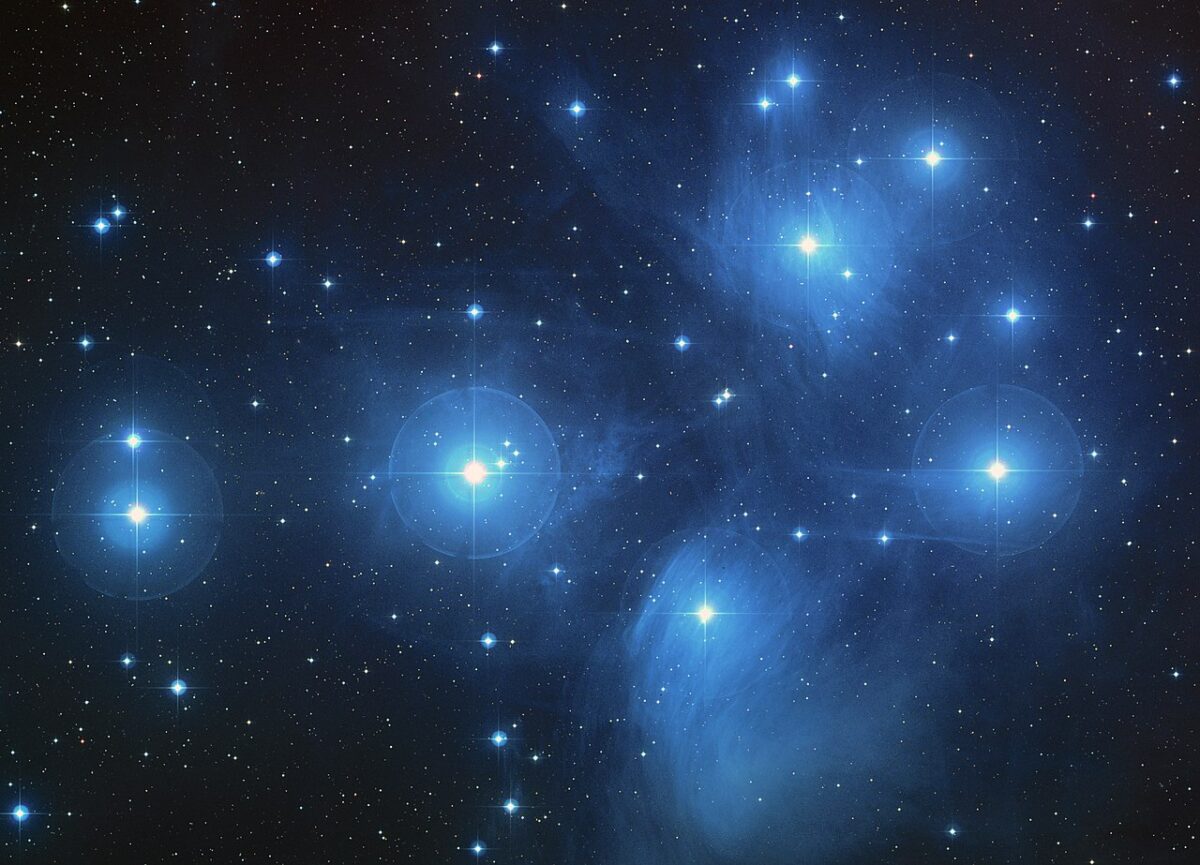Unlocking the Mysteries of Open Clusters: Learn About These Stellar Marvels and How to Observe Them
Open clusters are celestial gems scattered across the night sky, offering a captivating glimpse into the vastness of our universe. These dazzling gatherings of stars have fascinated astronomers and stargazers for centuries. In this article, we will delve into the intriguing world of open clusters, discover what makes them special, and provide tips on how to observe them in all their glory. So, grab your telescope and embark on a cosmic journey to explore these remarkable starry ensembles.
What Are Open Clusters?
Open clusters, often referred to as galactic or stellar clusters, are groups of stars that are loosely bound by gravity and share a common origin. These clusters are a fundamental component of our galaxy, the Milky Way, and can be found within its spiral arms. They are distinct from their counterparts, globular clusters, which are densely packed, spherical collections of stars that orbit the galactic core.
Open clusters are characterized by several key features:
1. Youthful Stellar Communities
One of the defining characteristics of open clusters is their relatively young age. These clusters are typically composed of stars that formed from the same molecular cloud and are, therefore, approximately the same age. While the exact age of open clusters can vary, they are generally between a few million to a few hundred million years old. In cosmic terms, this is quite young, considering that stars like our sun can have lifetimes spanning billions of years.
2. Size Variability
Open clusters come in various sizes, with the number of stars within each cluster ranging from a few dozen to several thousand. The size and number of stars in a cluster depend on factors such as the density of the molecular cloud from which they formed and the gravitational interactions within the cluster itself.
3. Diverse Stellar Makeup
Open clusters offer a diverse array of stellar types. They contain stars of different masses, temperatures, and luminosities. This diversity is a consequence of the conditions within the molecular cloud that gave birth to the cluster. Over time, some of these stars may evolve into giants or supergiants, while others may become white dwarfs.
4. Gravitational Vulnerability
Despite their stellar diversity, open clusters face an inevitable fate: gravitational disruption. Over millions of years, the gravitational interactions between stars within the cluster and external forces, such as passing molecular clouds or encounters with other celestial objects, can lead to the dispersal of the cluster. As a result, open clusters have a finite lifespan, and they eventually dissolve into the general stellar population of the galaxy.
Now that we have a better understanding of what open clusters are, let’s explore some examples of these fascinating celestial gatherings.
Notable Open Clusters in the Night Sky
1. The Pleiades (M45)
Location: Taurus Constellation
The Pleiades, also known as the Seven Sisters, is arguably one of the most famous open clusters in the night sky. Visible to the naked eye, this cluster consists of hot, blue stars that form a distinct, tight grouping. According to Greek mythology, the Seven Sisters were the daughters of Atlas, and they are often associated with the pursuit of the hunter Orion.
2. The Hyades (Melotte 25)
Location: Taurus Constellation
Located near the Pleiades in the constellation Taurus, the Hyades is another prominent open cluster. It is unique in that it appears as a V-shaped arrangement of stars and includes Aldebaran, the brightest star in Taurus, which is not part of the cluster but lies along the same line of sight.
3. The Beehive Cluster (M44)
Location: Cancer Constellation
The Beehive Cluster, also known as Messier 44, is a beautiful open cluster in the constellation Cancer. It is visible to the naked eye under dark skies and resembles a swarm of stars. The Beehive Cluster is one of the nearest open clusters to Earth, making it an excellent target for observation.
4. The Double Cluster (NGC 869 and NGC 884)
Location: Perseus Constellation
The Double Cluster is a stunning pair of open clusters, NGC 869 and NGC 884, situated in the constellation Perseus. These clusters are relatively close to each other in the night sky, creating a breathtaking visual spectacle through binoculars or a telescope. The Double Cluster is a favorite among amateur astronomers.
5. M6 and M7
Location: Scorpius Constellation
M6, also known as the Butterfly Cluster, and M7, the Ptolemy Cluster, are two open clusters located in the constellation Scorpius. M6 is named for its resemblance to a butterfly, while M7 is named after the ancient Greek astronomer Claudius Ptolemy. Both clusters are visible to the naked eye and offer striking views through telescopes.
These are just a few examples of the many open clusters scattered throughout the night sky. Now that you know what open clusters are and have some iconic clusters to look out for, let’s explore how to observe them effectively.
Tips for Observing Open Clusters
Observing open clusters can be a rewarding experience, whether you’re a seasoned astronomer or a novice stargazer. To make the most of your open cluster observations, consider the following tips:
1. Find a Dark Sky Location
Light pollution can significantly hinder your ability to observe open clusters. To get the best views, head to a dark sky location, far from the bright lights of cities and towns. Dark sky parks and remote rural areas are ideal spots for pristine stargazing.
2. Use Binoculars or a Telescope
While some open clusters are visible to the naked eye, binoculars or a telescope will enhance your viewing experience. Binoculars provide a wider field of view, making it easier to locate clusters, while telescopes allow you to see individual stars within the cluster.
3. Consult Star Charts and Apps
To pinpoint the location of open clusters in the night sky, use star charts or astronomy apps. These resources provide detailed maps of celestial objects’ positions at different times and locations, helping you navigate the cosmos with precision.
4. Plan Observing Sessions
Plan your open cluster observations in advance. Check the moon’s phase and rise and set times to ensure you’re observing under optimal conditions. New moon nights are ideal for deep-sky observations, as there is minimal lunar interference.
5. Start with Prominent Clusters
Begin your open cluster observations with well-known clusters like the Pleiades or the Beehive Cluster. These are easily recognizable and serve as excellent starting points for amateur astronomers.
6. Take Notes and Sketch
Keep a notebook and pen handy during your observations. Jot down your observations, including the cluster’s appearance, the number of stars you can see, and any notable features. Sketching the cluster can also be a valuable visual record of your experience.
7. Experiment with Eyepieces
If you’re using a telescope, experiment with different eyepieces to vary the magnification. Some clusters may appear more striking with higher or lower magnification, depending on their size and density.
8. Observe Over Time
Open clusters are dynamic, evolving systems. Return to the same clusters on different nights or even years apart to witness changes in their appearance as stars within the cluster move and evolve.
9. Capture Astrophotography
For those interested in astrophotography, open clusters offer excellent subjects. With the right equipment and techniques, you can capture stunning images of these celestial gatherings to share with others.
10. Join an Astronomy Club
Consider joining a local astronomy club or online community. These groups often organize star parties and offer valuable advice and guidance for observing open clusters and other celestial objects.
Open clusters are not only visually stunning but also provide valuable insights into the birth and evolution of stars. By following these tips and exploring the night sky with patience and curiosity, you can unlock the secrets of these remarkable celestial gatherings.
Conclusion
In this exploration of open clusters, we’ve uncovered their unique characteristics, introduced you to some notable examples, and provided valuable tips for observing them. Open clusters are not only captivating to observe but also serve as important tools for astronomers to study the cosmos and its ongoing evolution. So, the next time you gaze up at the night sky, remember that each twinkling star may be part of a stellar family waiting to be discovered in the heart of an open cluster.

